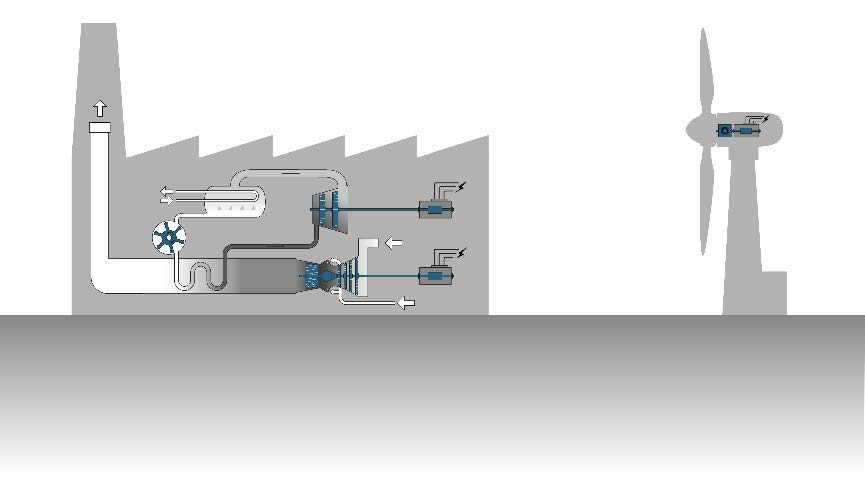
Energy topics, such as production and efficiency, are more concerning today than ever. The growth of clean energy technologies is relentless, and companies want to manage energy budgets efficiently, The carbon footprint of products will probably become a sales criterion soon.
Up to the end of the 19th century, energy was generated by means of human and animal power. The rapid progress brought about by the industrial revolution meant that faster, more efficient solutions were found. We’re talking about all kinds of special small power plants.
WFL Millturn Technologies is also establishing itself in this sector with the complete machining of key components for small power plants: turbine, gear, and generator shafts as well as valves and pump wheels have the highest shape and position tolerances and place high demands on their machining process.
For the efficient production of such workpieces, a Millturn machine masters the necessary special technologies such as the milling of special profiles or large gears as well as the grinding of shaft parts including concentricity and roundness measurement - all in compliance with the highest precision requirements.
The machining process

The untensioned blank in the generator shafts is often pre-turned and turned into a Millturn with welded-on bars. As an alternative to welded-on bars, some generator shafts are also made from solid material. One of the most important aspects of machining the welded-on bars is ensuring that the blank is aligned in the circumferential direction in such a way that the longitudinal grooves are inserted in the center of the bars.
Thanks to the WFL measuring cycles, the measurement of this blank is fully automated, with it even being possible to determine and correct welding errors. In the shaft area, beveled ø 60 mm holes must be inserted, which meet the ø 100 mm center hole at a depth of approx. 500 mm. All holes can be inserted in the Millturn without any tools, with very elegant rounding of the edges of the holes being carried out too. The precise outside diameter of the bars that is to be machined is finished in IT7 quality by means of turn-milling. Bearing seats on the pins are rotated with maximum precision and subsequently rolled. The WFL in-process measuring guarantees process reliability, even with IT6 quality.
Savings guaranteed
The potential savings when machining generator shafts in a Millturn are considerable compared to sequential manufacturing on different machines: a full 60% can be saved by complete machining in the process chain. In the case of set-up time, the savings are as high as 80-90%.
Contact Details
Related Glossary Terms
- gang cutting ( milling)
gang cutting ( milling)
Machining with several cutters mounted on a single arbor, generally for simultaneous cutting.
- grinding
grinding
Machining operation in which material is removed from the workpiece by a powered abrasive wheel, stone, belt, paste, sheet, compound, slurry, etc. Takes various forms: surface grinding (creates flat and/or squared surfaces); cylindrical grinding (for external cylindrical and tapered shapes, fillets, undercuts, etc.); centerless grinding; chamfering; thread and form grinding; tool and cutter grinding; offhand grinding; lapping and polishing (grinding with extremely fine grits to create ultrasmooth surfaces); honing; and disc grinding.
- milling
milling
Machining operation in which metal or other material is removed by applying power to a rotating cutter. In vertical milling, the cutting tool is mounted vertically on the spindle. In horizontal milling, the cutting tool is mounted horizontally, either directly on the spindle or on an arbor. Horizontal milling is further broken down into conventional milling, where the cutter rotates opposite the direction of feed, or “up” into the workpiece; and climb milling, where the cutter rotates in the direction of feed, or “down” into the workpiece. Milling operations include plane or surface milling, endmilling, facemilling, angle milling, form milling and profiling.






